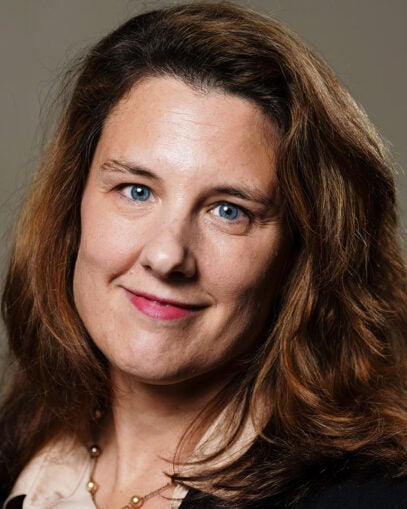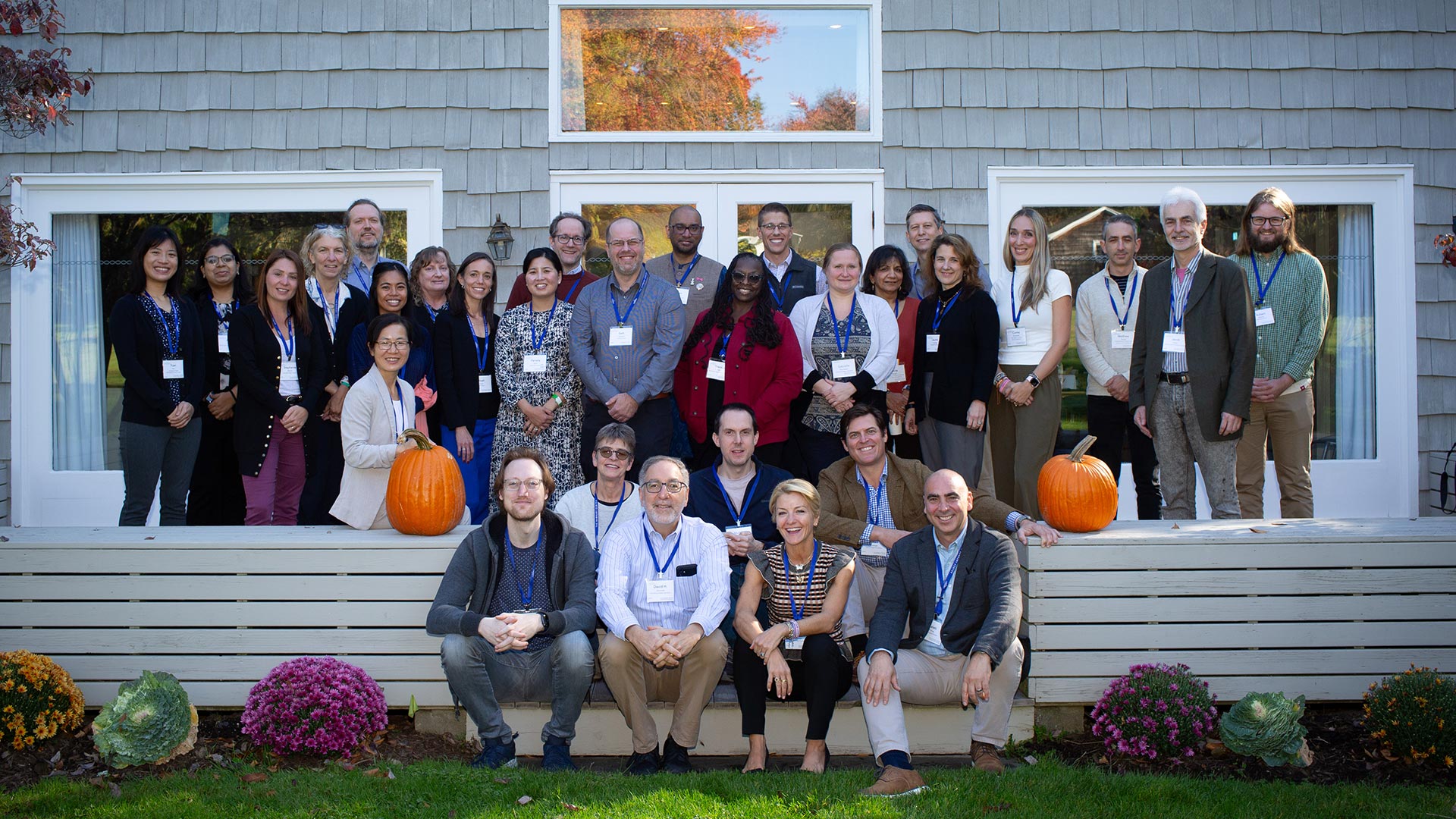During the Banbury Center’s October 2024 meeting, “Cognition and Behavior in Neurofibromatosis type 1 (NF1),” I was able to speak with Laurie Cutting, Ph.D. Dr. Cutting is Patricia and Rodes Hart Chair Professor of Neuroscience at Vanderbilt University in the Departments of Special Education, Psychology, Radiology, Pediatrics and Electrical and Computer Engineering. She earned her Ph.D. at Northwestern University. We spoke about her research on the cognitive neuroscience of learning and child development, as well as the challenges and triumphs that come with implementing this research.

Can you tell me about what you do in, more or less, two sentences?
I am a cognitive neuroscientist, and my focus area of study is understanding how children’s brains develop, and then linking aspects of brain development to what might go wrong or right in terms of different cognitive and academic outcomes. More recently, I’ve been interested in understanding environmental impacts on brain development and plasticity. One of the things that my lab has done for quite some time is trying to understand more about how plasticity happens in children’s brains when teaching them new ways of learning.
What is your favorite part about what you do? What gets you excited to go to work?
Being able to help families motivates and excites me. Scientifically, what is interesting to me at this moment is developing biomarkers that will predict outcomes for children. For example, early on in development, what will predict a child’s ability to read in the future, long before they are able to read or even talk? Are there biomarkers that can indicate who will have difficulty learning math, or another area of cognition? Can we use this information to intervene in those who are at risk early on so that they do not struggle as much, or can we develop certain intervention approaches that are tailored to their specific profile, therefore developing “precision education” approaches?
What are some of the challenges you face in your work?
There’s lots of time between data collection and publication; I think that is probably universal to everyone who works in science. But I think one of the greatest challenges is determining at what point do you have enough science to communicate recommendations to families, teachers, and society in a way that indicates that we should change the way that we are doing things? Another challenge of our work is always making sure that we have the most representative and diverse populations in our studies. When we are studying a specific process, are we researching it in a way that is representative of what’s happening across the United States or even around the world?
What sparked your interest in the cognitive neuroscience of learning?
Early on my career, I worked with a little boy who struggled to learn how to read. He had lots of advantages, and there was no apparent reason that he should struggle. He ended up being diagnosed with dyslexia. This little boy sparked my interest in wanting to understand what goes on in the brain that gives rise to different learning profiles and then potentially the need for different educational approaches. I find this line of research fascinating.
What I also find intriguing is understanding not only areas where children might struggle, but also where they flourish. What are the brain correlates of these “two sides of the coin”? Very often in science, we are only studying instances of things going wrong, but it’s interesting to understand how things end up going right.
Is there a common misconception about your work?
On one hand, I think neuroimaging and understanding more about the brain has proven to be insightful and has greatly accelerated our understanding of neural processes – particularly in terms of development, including environmental influences on development and linkages to cognitive outcomes. On the other hand, I think there is a belief that understanding the brain is going to solve everything, when it’s just the beginning. You may understand what is going on in the brain, and how children are struggling with one aspect or another in their development, but then the questions become: What do you do about it? How do you intervene best? When you intervene, what changes happen in which neural pathways, and do they sustain over time? Can the way a person’s brain functions, or the way its structured, tell us something about the type of intervention they should receive? A lot of these are unanswered questions, and we are quite a way from answering them; I think sometimes people think we’re closer than we are.
Is there a recent development in your field that you believe will have a large impact?
I think that the emphasis on precision medicine, biomarkers, and fine-grained measurement of how individuals are approaching and completing tasks is an interesting new development and is largely made possible by artificial intelligence and machine learning approaches.
But when I think about developmental disabilities and learning disabilities, what I think is going to be helpful is the ability to handle more data – and by more data, I don’t necessarily mean more people. I mean more moment-by-moment measurements. For example, what is a child doing as they are reading, such as where and how are their eyes are moving around texts? And, concurrently, what is happening in the brain and what types of physiological responses is the person exhibiting? Being able to leverage those moment-by-moment data points may prove to be much more sensitive in terms of understanding clinical outcomes and responsiveness to clinical trials, so I think that is an exciting new development in the field.
Through your work, what kind of impact are you hoping to make?
I’ve always had one guiding light in my career: I really, really want to make kids’ lives better. It’s very simplistic, I know. But one of the most rewarding things for me is when a family emails me and says, “What you found in this study was so helpful.” Related to this meeting, I have had families who have a child with Neurofibromatosis type 1 email me and say, “Thank you so much for the research that you did. I took it to the school system and explained that they needed to give my child certain services or interventions because your work has shown that they do work for children with Neurofibromatosis type 1.” So, they were able to argue for services for their children, which hopefully has made a big difference in their lives. Getting those types of emails is really rewarding; I save them all. They make me feel like what I am doing matters and changes the lives of children and families.
How has public perception toward developmental disabilities changed over the course of your career?
I think society has become much more accepting and embracing of people’s differences, as it should. Variation is good; we don’t all need to be the same. With variation comes different strengths and weaknesses.
I have a colleague who has now passed away – he founded The Dyslexia Foundation and was the head of it for years – his name was Will Baker. He had dyslexia himself, and when he was growing up, he suffered a lot in school because dyslexia was not well understood. It was so scarring for him. He used to open every meeting that The Dyslexia Foundation sponsored – the meetings are actually very similar to the Banbury Center’s “think tank” style – saying how grateful he was that we were there, and that we were trying to help kids with dyslexia by making the science better. He could barely get through a sentence because he would recall the memories of what he went through, and he would tear up. I feel like society is more accepting now, but there are still huge gaps in terms of our knowledge. There are gaps in what we know about child development, and then there are gaps in implementation – that is, how (or whether) the information that what we do know is utilized and implemented in schools, childcare settings, and other entities that work with children.
This is your first time at the Banbury Center. What do you think of the meeting so far?
I think it’s wonderful. It allows people to have so much time for dialogue and interaction, in both a formal setting – discussions after presentations, and integrative discussions at the end of the day – and an informal setting – downtime over lunches, dinners, receptions, and cocktail hours. This peaceful location, and the smallness of the meeting, promotes thinking and allows people to get away from the day-to-day of their busy lives.

